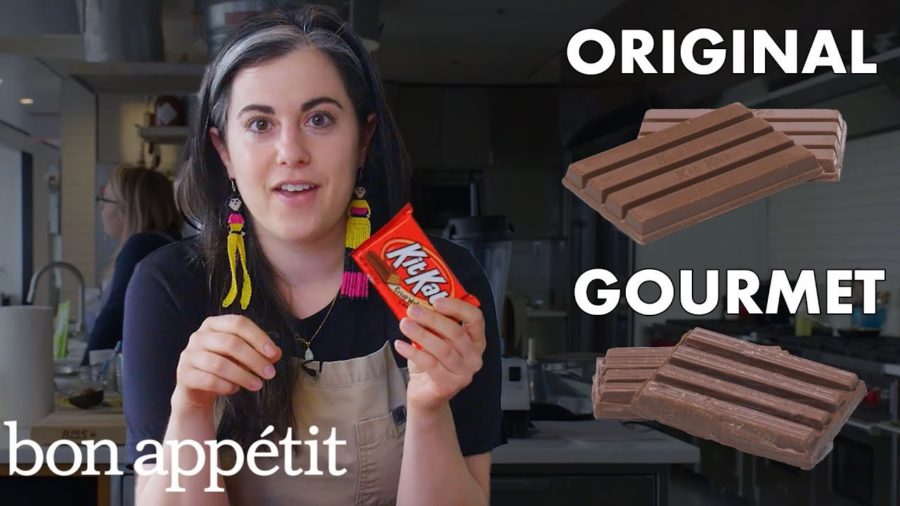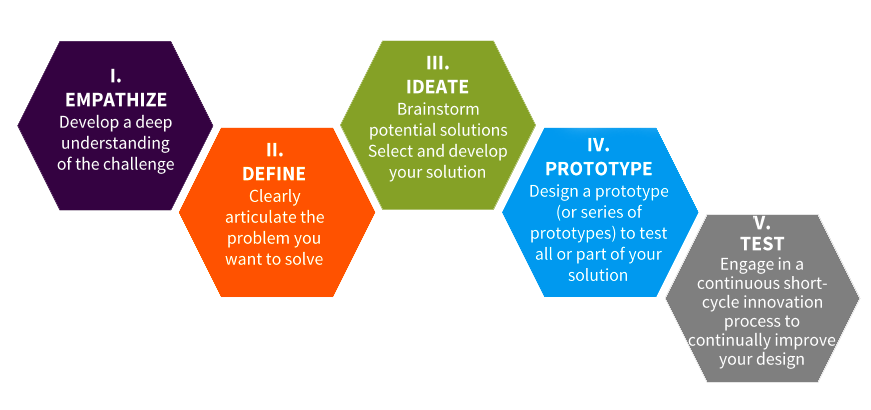August days are good for planning the next school year, and binge watching episodes out of procrastination. I’m convinced Bon Appétit’s “Gourmet makes” show helps you accomplish both. The fast-paced ~15 min episodes are excellent for binge walking, but also are ideal models of an inquiry-based STEM design challenges. In watching ALL of the episodes while waiting for toddlers to go to sleep, I couldn’t help thinking that each is a good example of a design challenge, the challenge being how do you use regular kitchen ingredients and techniques to recreate classic junk foods like Oreos, Gushers, and Kit Kats.
The show follows the pastry chef Claire as she goes through an arc that look like a STEAM Inquiry. Specifically, it seems to line up with Stanford Design School’s 5 basic modes of design thinking Empathize – Define – Ideate – Prototype – Test. The first step empathize happens as they ask other people who work in the test Kitchen about the product they are duplicating. Claire asks “what kind of things do I need to do to make a copy of this?” and “What kind of things should I do to improve on this?” It’s almost like a notice wonder about the challenge, but in partners. This helps clarify what the finished product looks like, and establishes that chef can go to the other person later in the show to see if their final product meets that expectation. Maybe a process like this could be used in class to help kids determine their own rubric for the challenge. It also tranforms the people giving feedback into helpful judges as they give feedback as progress along the way.
Next Claire moves to other ways of gathering information.She reads the ingredients, she looks at stuff on amazon, she reads other recipes, and she watches commercials. She does all of this to come up with an approach that she can take to the challenge. This helps her get to the Define and Ideate steps, and then you see her describe what her first prototype will look like. What is nice about this is that the research is well-defined and has a fixed end point and is kept separate from being on-going and paralyzing, and the actual prototyping has to get done away from the internet while she is actually cooking stuff. What is also good is that she is making decisions and keeping track along the way, not necessarily following a recipe, which might be a good thing for students to do when they are solving a problem.
Then the show follows her as she struggles to make the different parts of that episodes dessert. After a quick montage she has something that she can eat, a Prototype she can Test. As she eats it, she can test how good it works. Since she is in a room with a bunch of people!
This made me think about a classroom full of kids, and how the kids use each other as sources of feedback while they are trying out the different prototypes they are developing to finish their design challenge. Because the students would have already given feedback in the Empathize phase. Maybe there could even be some graphic organizers that are created to ensure that these kinds of exchanges happen. On the show the exchanges often are the moments where the Claire both finds out that she isn’t there yet, and also finds out what direction to go in next. Creating these kinds of exchanges are the ones that I’m the most excited about trying in the fall.
Finally at the end, when they have satisfied the goals at the beginning of the challenge Claire declares victory. The show ends with her reading the recipe, and thus presenting the result of their work in a way that someone else can use it. I think a lot of times with projects kids get the project finished, but don’t think through how they can present it.
The show isn’t perfect (i.e. glaring lack of diversity), but it seems like good inspiration for the summer planning, or late summer binge watching. What are good projects that you could use this process?



Leave a Reply